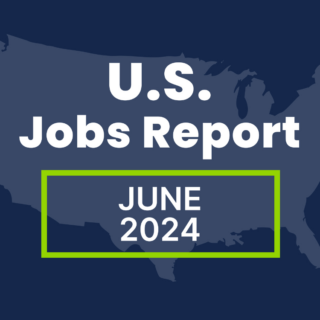The rise of the gig economy increased access to global talent and changing candidate expectations are forcing many companies to reconsider the make-up of their workforces. Organizations are beginning to recognize the benefits of integrating both full-time and contingent talent into one total workforce program. Evolving your talent acquisition program to include both full-time and contingent workers allow you to focus on finding the best talent, regardless of worker type.
In this disrupted talent landscape, it’s clear that Total Workforce Solutions can provide a competitive advantage. But what, exactly, does a total workforce solution look like in action?
What are Total Workforce Solutions?
A total talent solution lets you hire the best talent for your positions, regardless of worker type. Total Workforce Solutions programs can incorporate full cycle, scalable RPO and MSP programs or specific services to meet your needs. Total Workforce Solutions provide a holistic approach to talent acquisition by providing visibility across all worker types – from contingent to full-time – and talent channels.
Key drivers and advantages of Total Workforce Solutions
Key drivers for MSP and RPO integration include:
- Bifurcated talent acquisition strategy
- Lack of visibility across total workforce
- Siloed decision making
- Risk
- Growth of the non-employee workforce
- Globalized workforce
- Emerging talent pools
- Skills and experience scarcity
- Escalating competition for talent
- Demographic shifts
- Ineffective pipelining
- Workforce disruption
Total Workforce Solutions drive financial advantages like cost savings from better workforce utilization, improved demand management and lower service and vendor management costs than in a previously decentralized program. Strategic benefits include more access to global expertise, cross-trained and fully integrated implementation teams, and insights and advice across your entire talent spectrum.
Finally, moving from a bifurcated talent acquisition strategy with siloed decision making and a lack of visibility across employee and non-employees to a holistic view of the entire talent spectrum will allow you to be more flexible and adaptable. You can engage the talent you need, whether it be full-time, contingent, freelance, contractor, remote or on-site, depending on the position.
Designing your total workforce solution
Other benefits of a fully integrated talent strategy include competitive advantage, stability and the opportunity become more proactive – moving from “default” to “design.” However, moving your talent acquisition strategy from default to design is not a simple process. The factors that go into creating an integrated talent strategy differ based on every organization and the maturity of their workforce programs.
There are three key questions you should ask yourself before starting down a path to a total talent strategy:
- What is your current state?
- Where do you want to be?
- How do you get started?
Getting started may be the most difficult hurdle for companies moving to a total workforce solution. For some organizations, it may help to first show the value of centralizing all forms of contingent and full-time employees into a single program. Once internal stakeholders can see the value of greater reporting visibility, risk mitigation, cost savings and more, it begins to remove the uncertainty and knowledge siloes that have been created.
At PeopleScout’s 2017 client forum, attendees participated in roundtable discussions on Total Workforce Solutions. Key takeaways on getting started with a total talent program included:
- Have a plan to help you move from reactive to proactive
- Analyze the data you have at your disposal to determine what you can use to support your workforce planning
- Find an executive sponsor for your total workforce program to provide guidance and reinforcement
Check out our white paper, Total Workforce Solutions: Optimize Talent Acquisition by Blending RPO and MSP, to learn how to optimize your talent acquisition efforts.



